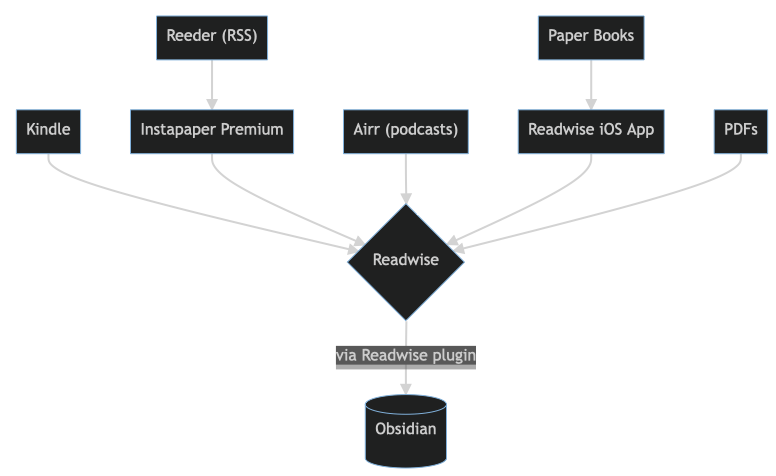I think notifications are a rich vein for thinking about my setup, because it requires me to be clear about my intentions as regards to what I want to be notified about and where (and how and when).
Analyzing The Problem Space
A notification is a way to let me know that something has happened, will happen, is available. It is an event that can interact with me and potentially makes me do things. It’s a trigger (or cue).
Notifications can be desirable, overwhelming, unhelpful or outright spam. They are not inherently good or bad, but they are not a neutral thing in the world either: They make a difference.
Judging the usefulness of a notification is a involved process. The complexity of getting notifications right increases when realizing that you have to set them up beforehand, which means you have to expect the future.
Missing something means that a change of state in my world passed me by. Notification, on or not: If I missed it, the knowledge of having missed it implies that I now know that my world has changed (it) and I noticed afterwards. For things I don’t want to miss, I am interested in the changed state of affairs. But this doesn’t mean that I need to know about it now.
2. Is the change of state in itself important? - A change of the status quo doesn’t necessarily mean the info is going to be relevant forever (or relevant temporarily).
As compared to the things I don’t want to miss, here I’m more interested in the change of state: Something became available. A window of obligation/opportunity opened (or is about to close). Something was like this now it’s like that. Depending on the change, I might be interested in it forever or only for a limited period. In either case, time sensitivity itself is not the same as a change of state. It’s another property that alters this one.
3. How time sensitive is it? - Time sensitivity is not the same as the importance of the change occurring or the importance of the new status quo.
Time sensitivity doesn’t mean any change of state needs to be known now. Sometimes it needs to be known depending on a location or on a certain date and time. “Now” is one, but not the only possibility. The reasons for a notification being time sensitive can be manifold in practice. Abstractly speaking, it is a question of priority and urgency - which are also not the same thing.
Whilst priority is trying to rank items by importance (which itself is a relative measure of impactfulness of the thing in question) to my world, urgency re-ranks those items according to currently open windows of opportunity and/or obligation.
Not only is it hard to keep all these distinctions in mind when I’m trying to predict my future, I’m also prone to getting it wrong, because my world is not made of numbers. Parts of my world aren’t measurable, some parts are not even comparable. Still other parts might not even be identifiable as parts!
And if this wasn’t making it difficult enough, this is surely not even close to a complete description of the problem space and none of this is available to me objectively, either. So what to do?
Keeping It Simple
Understand the notification system of your setup
I’m an Apple user and have an iPhone, a work Mac, a personal Mac and an iPad. For me, it was important to understand that while focus modes can be shared across devices, the per-app notification settings are not.
Which makes sense, since not every app is available, let alone installed on every device.
Some notification specific settings are adjusted within the app itself, while others are adjusted through the settings of the os.
Start with no notifications, badges, anything
By disabling all notifications (individually), I am making sure that noise doesn’t even reach me. The default answer to any new app asking for permission to push notifications to me is “No”.
Same goes for badges, space on my home screen, or an app even getting installed. By radically reducing the apps that I have to manage, I reduce the problem a lot, by following this principled approach.
Try the least distracting, simple thing first
I knew some apps needed some way to inform me. And although my analysis above was important to get a feel for the difficulty of the problem, an 80% solution for 20% of effort may be good enough in practice. So I try that first for any app that actually really needs to inform me.
The harder part of this heuristic is figuring out what the least distracting thing is. I find a badge count of the right measure to be pretty good. But sometimes, actual notifications on one or more devices might be the obvious choice.
If I don’t act on it, I remove it
If something is only noise to me, it’s not worth getting informed about. Remove, simplify.
Manage the baseline first
Before even getting into things like focus modes, I make sure my baseline of notifications has a high average of usefulness. This is hard to measure. A good quick test is maybe if notification center is a useful place to me, or not. I tinker with the baseline before I’m even introducing new focus modes (which add extra complexity).
Use focus modes sparingly
I currently have the following focus modes:
